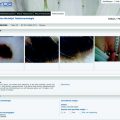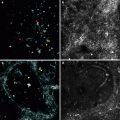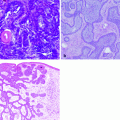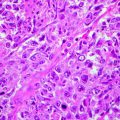Alfonso Baldi, Paola Pasquali and Enrico P Spugnini (eds.)Current Clinical PathologySkin Cancer2014A Practical Approach10.1007/978-1-4614-7357-2_26© Springer Science+Business Media New York 2014
26. Lasers for Skin Cancer
Michael P. McLeod1, Katherine M. Ferris2, Sonal Choudhary1, Yasser A. Alqubaisy1 and Keyvan Nouri1, 3
(1)
Department of Dermatology and Cutaneous Surgery, University of Miami Leonard M. Miller School of Medicine, 1475 N.W. 12 Ave #2175, Miami, FL 33136, USA
(2)
Department of Dermatology and Cutaneous Surgery, University of Miami Hospital, Miami, FL, USA
(3)
Department of Dermatology, Sylvester Comprehensive Cancer Center/University of Miami Hospital and Clinics, 1475 N.W. 12 Ave #2175, Miami, FL 33136, USA
Abstract
The optimal laser treatment for skin cancer has not yet been developed. The first lasers that were used in an attempt to treat skin cancer emitted a continuous wave; however, significant nonspecific thermal heating occurred. In order to not extend beyond the thermal relaxation time of targeted tissue, pulsed lasers were developed. These lasers are now showing promise for treating skin cancer, specifically basal cell carcinoma. Recent studies by Shah et al. followed by Konnikov et al. have demonstrated that the 595 nm pulse dye laser may be effective for basal cell carcinomas of approximately 1.5 cm or less in diameter. Other approaches combining the Er:YAG and CO2 ablative lasers as adjunctive agents to photodynamic therapy are also showing promise for the treatment of basal cell carcinomas.
Key Points
The optimal skin cancer laser therapy should directly target the neoplastic cells, destroy them in a reproducible manner, and only require one treatment.
Experience on lasers explored for treating skin cancers be be presented including the argon, carbon dioxide (CO2), erbium-doped yttrium aluminum garnet (Er:YAG), and, most recently, pulse dye lasers will be presented.
A laser such as CO2 or Er:YAG may be useful as an adjunctive treatment with secondary use of photodynamic therapy.
Future considerations include combination of various mapping techniques such as reflectance confocal microscopy or a variant may be able to specifically locate the tumor cells so that a laser may directly target them.
Introduction
Lasers are currently not an effective treatment for skin cancer. However, considerable research has been carried out which has led to a greater understanding of how to develop a laser that is effective for treating skin cancer. The optimal laser therapy should directly target the neoplastic cells, destroy them in a reproducible manner, and only require one treatment.
Lasers offer a number of advantages over the current standards of care, which include Mohs micrographic surgery (MMS), surgical excision, curettage and electrodessication, cryosurgery, and radiation. Available dermatologic lasers are less invasive than standard surgical approaches and are likely to conserve more tissue than MMS. Lasers generally do not produce as large of a scar and are also less likely to lead to a loss of anatomical integrity in delicate areas such as the eye, ear, or genitalia when compared to standard surgical methods.
Basic Principles
Mohs micrographic surgery uses mapped staged surgical excision along with histological analysis of frozen sections to determine where the surgical margins of the tumor exist in relation to normal tissue. The horizontal histological sections allow nearly 100 % of the surgical margins to be observed under the microscope. Unfortunately, MMS is time-consuming and is limited to fellowship-trained dermatologists.
Surgical excision uses a predetermined surgical margin in relationship to the clinically observed tumor. The surgical margins are determined by the tumor type; for example, basal cell carcinoma requires 4 mm margins, squamous cell carcinoma needs 5 mm margins, and melanoma is dependent upon the Breslow depth with surgical margins varying from 5 mm to 2+ cm. Surgical excisions can be associated with large scars and the large margins can compromise functionality as well as anatomical integrity. Neither surgical excision nor MMS is an optimal treatment for patients with multiple and diffusely located skin cancers such as patients affected by nevoid BCC syndrome, xeroderma pigmentosa, Rothmund-Thomson syndrome, or Gorlin-Goltz syndrome.
Curettage and electrodessication is primarily used for more superficial tumors. It applies an electric current to desiccate the tumor and allows for secondary curetting of the more friable tumor remnants. Unfortunately, this method does not allow for histological analysis and does not successfully treat deeper tumors.
Cryosurgery uses liquid nitrogen to lower the tumor temperature to approximately −50 to −60 °C. It is associated with pain, hypopigmentation, higher recurrence rates for certain tumor types, and also a lack of histological analysis.
Radiation uses X-rays or electron beam therapy to destroy neoplastic tissue. Tissue exposed to radiation therapy tends to atrophy, which worsens with time. This is in contradistinction to scars associated with surgical methods that generally improve with time. This technique can also be time-consuming and, in addition to atrophy, may induce alopecia and even radionecrosis, especially over bony surfaces, since bone is an avid absorber of radiation.
Laser therapy aims to confer sufficient energy to neoplastic tissue in order to cause destruction. The therapeutic approach has evolved from causing diffuse destruction, of both diseased and normal tissue, to more selective targeted therapy. One such target that has shown promise is the vasculature within a tumor, such as that found in basal cell carcinomas. Many newer lasers exploit this target to cause localized tumor destruction. In addition, recent approaches have attempted to apply two different laser wavelengths sequentially or have used lasers as an adjunct to other modalities in order to achieve greater efficacy.
Lasers as a Single Treatment
A number of lasers have been explored for treating skin cancers including the argon, carbon dioxide (CO2), erbium-doped yttrium aluminum garnet (Er:YAG), and, most recently, the 585 and 595 nm pulse dye lasers. The first lasers used to treat skin cancers and premalignant conditions were the continuous wave (CW), CO2 and argon lasers. The continuous wave lasers are associated with a significant risk of nonspecific thermal heating and secondarily can result in hypertrophic and atrophic scarring [1, 2]. The pulsed lasers were developed in an effort to minimize these side effects [3–5].
Argon Lasers
The argon laser emits a continuous wavelength of 457–514.5 nm but can also be used in gated and shuttered manners. Originally developed to treat pigmented lesions and port-wine stains, this laser remains limited in application due to its superficial depth of penetration of approximately 1 mm. Based on histological studies, the mechanism of the argon laser involves nonspecific thermal damage owing to exposure intervals beyond the thermal relaxation time of superficial vessels [6]. It has been effectively used to treat Kaposi’s sarcoma, a tumor with a well-known vascular component [7]. Similarly, it has been used to effectively treat bowenoid papulosis and Bowen’s disease located on the genitalia, both of which are superficial cutaneous tumors [8]. In cases where surgical excision is contraindicated, the argon laser has been used to treat lentigo maligna, albeit not successfully likely due to the atypical melanocytes extending down the adnexal structures deeper than the penetration depth of this laser [9, 10]. This laser has also been used to treat leukoplakia, malignant melanoma, and even metastatic melanoma; however, such reports included insufficient patient numbers to effectively evaluate this treatment [11, 12].
Nd:YAG Lasers
The Nd:YAG lasers penetrate much deeper (4–6 mm) than the argon lasers due to their longer wavelength of 1,064 nm [13]. This particular wavelength targets both normal and neoplastic tissue and destroys them by coagulation necrosis [13]. It has been successful in treating perianal condyloma acuminata as well as hemangiomas [14, 15]. The Nd:YAG has been explored for a diverse number of tumors including Bowen’s disease, basal cell carcinoma, actinic keratosis, leukoplakia, Kaposi’s sarcoma, and bowenoid papulosis [16–18]. The most successful reports have come from the Russian literature where the pulsed Nd:YAG laser has been used to successfully treat squamous cell carcinoma, basal cell carcinoma, malignant melanoma, and cutaneous metastases of melanoma [7, 19, 20]. One large-scale study involving BCC and SCC by Moskalik et al. [21] demonstrated recurrence rates of 1.8 % for BCCs treated with a pulsed Nd laser, 2.5 % for BCCs treated with the pulsed Nd:YAG laser, while 4.4 % of SCCs treated with pulsed Nd recurred (no SCCs were treated with the Nd:YAG). The follow-up intervals ranged from 3 months to 5 years. These results indicate that the Nd and Nd:YAG lasers may be an effective treatment for BCC and SCC; however, further study is warranted.
Ruby Lasers
The 694 nm ruby laser has been used for treating basal cell carcinoma, squamous cell carcinoma, melanoma, mycosis fungoides, and Kaposi’s sarcoma with limited success [12, 22]. Tumors with pigmentation such as pigmented BCC, Kaposi’s sarcoma, and melanoma avidly absorb the 694 nm wavelength in comparison to nonpigmented tumors [13]. Despite this feature, the ruby laser has not outperformed other treatment options and further study is not warranted at this time.
CO2 Lasers
The 10,600 nm infrared CO2 laser was the predominant laser previously (prior to the PDL) studied in the treatment of cutaneous skin tumors [1, 8, 14, 22–27]. The 10,600 nm wavelength targets water and can be used for vaporization, coagulation, and cutting. In fact, blood and lymphatic vessels smaller than 0.5 mm in diameter can be sealed by the laser [13]. The CO2 laser can be used to excise the tumor; however, since it causes coagulation to the edges where it cuts, histological analysis is not as accurate as that which occurs with scalpel excisions [13]. The CO2 laser has demonstrated poor results when treating basal cell carcinoma in vaporization mode [23]. It has been used more successfully to treat SCC in situ, including genital lesions which can be associated with significant morbidity following surgical excision [28]. Additionally, the laser has demonstrated clinical efficacy in treating bowenoid papulosis, leukoplakia, actinic cheilitis, and solar keratosis [27, 29–32]. In fact, the CO2 laser in vaporization mode can be considered a treatment of choice for actinic cheilitis, erythroplasia of Queyrat, and bowenoid papulosis due to its success at removing the neoplastic lesion and excellent cosmesis [27, 29, 31].
Stay updated, free articles. Join our Telegram channel

Full access? Get Clinical Tree








